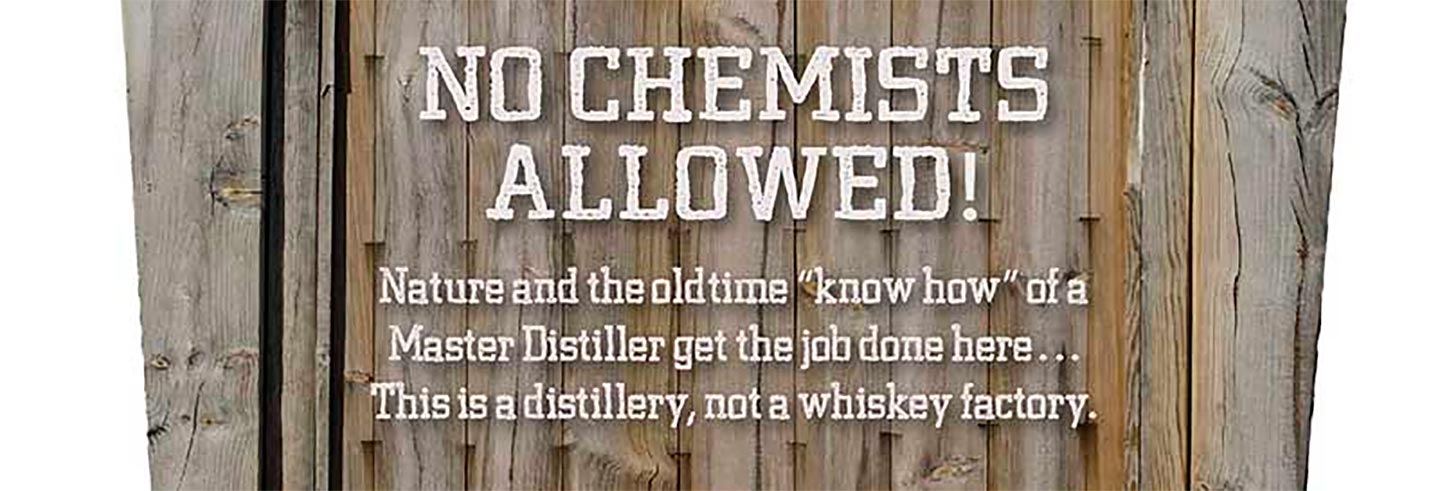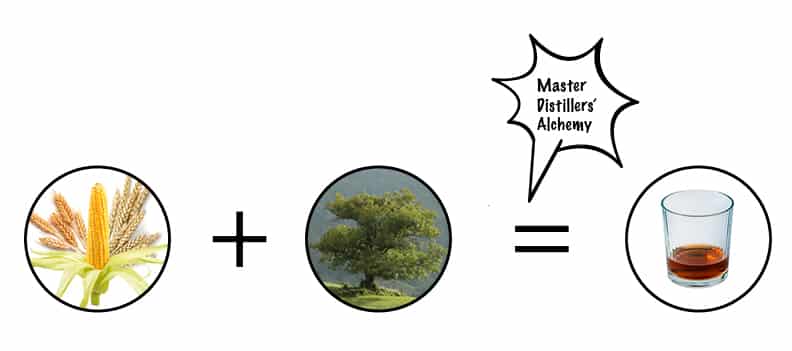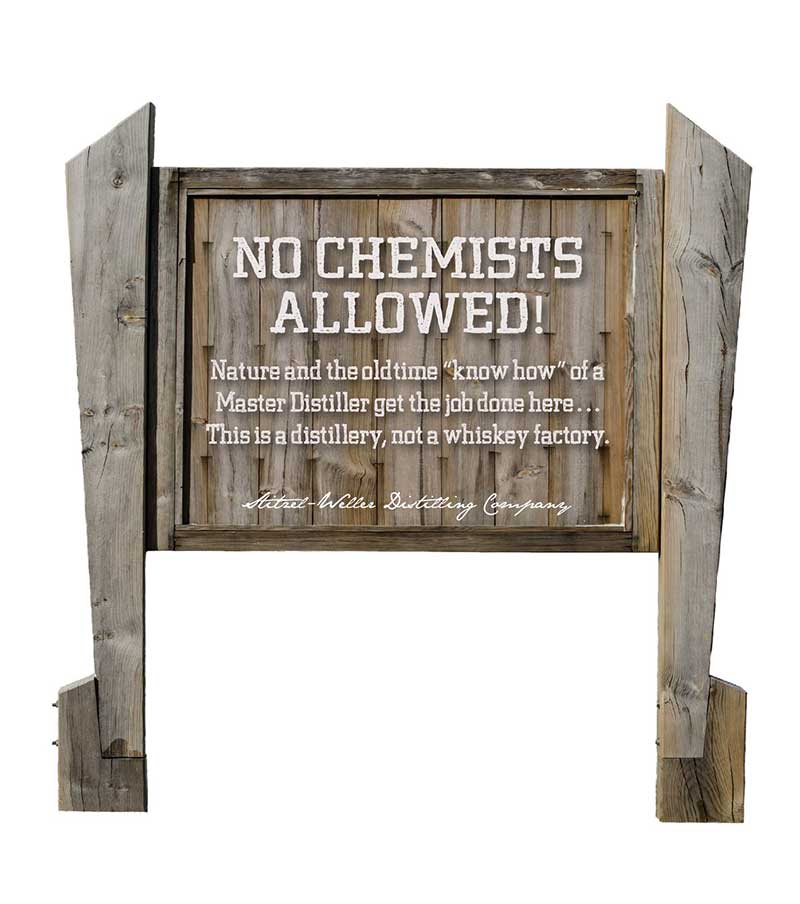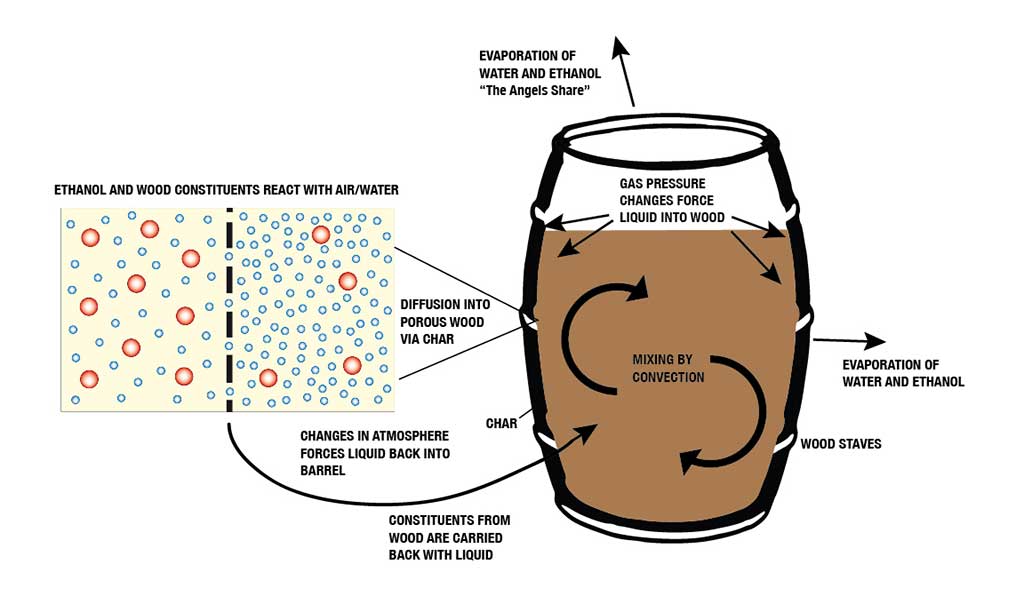The Science of Barrel Aging – A Primer
What is the science of barrel aging? For many of us, chemistry is not a topic of regular conversation or even something we think about while dozing under a hot shower in the morning.

For many of us, chemistry is not a topic of regular conversation or even something we think about while dozing under a hot shower in the morning. It’s true we’ve likely triggered some high school science memories by watching episodes of Breaking Bad, but the fact remains that we are largely insulated from the WHYS and HOWS behind our modern lives.
Science is really the “wizard” behind the curtain.
For example, here is an equation that is integral to our enjoyment as bourbon folk:

In its most simple form – corn + oak = bourbon.
But what actually occurs inside that barrel to change the white dog into bourbon?
Do Master Distillers employ a special version of alchemy that is passed down from generation to generation?
The old Stitzel-Weller Distillery used to have a sign on premises that said:

In that time, the science was less understood than today, but nonetheless I’d argue that bourbon making is a wonderful blend of sound chemistry and intrinsic human know-how. But for now, let’s get back to that clear liquor sitting in a barrel….
Essentially, and I’m over simplifying this here, the aging process can be broken down as follows:
- The temperature in the warehouse fluctuates day-by-day and during the changing seasons
- The resulting pressure change forces the whisky into the pores of the wood by way of the charred interior surface
- The whisky reacts with air/water and undergoes a chemical reaction that breaks down some of the organic compounds in the wood
- Some of the ethanol and water evaporates as part of the reaction and exposure to air causing the “Angel’s Share” to leave the barrel
- The wood constituents and whisky diffuse back into the barrel as the warehouse environment fluctuates
- Convection currents mix the contents of the barrel and the whisky turns darker brown as the cycle repeats

The organic chemicals from the wood are what give bourbon its identity and provide for the different flavor characteristics we enjoy from various brands and distilleries. The type of warehouse, it’s humidity, where the barrels are placed and about a hundred other variables contribute to the “alchemy” of aging a bourbon to maturity. Master Distillers rely on their expertise to manipulate the aging conditions to transform that white dog into liquid gold.
Who says that a little magic isn’t part of the equation?
If you are REALLY wanting some heady reading check out this article from Chromatographyonline.com.

